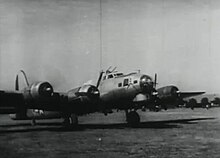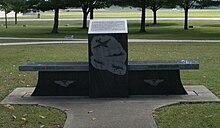
Bucharest Henri Coandă International Airport is Romania's busiest international airport, located in Otopeni, 16.5 km (10.3 mi) north of Bucharest's city centre. It is currently one of the two airports serving the capital of Romania. The other is Aurel Vlaicu Airport. The airport covers 605 hectares of land and contains two parallel runways, both 3,500 meters long.

The Eighth Air Force (Air Forces Strategic) is a numbered air force (NAF) of the United States Air Force's Air Force Global Strike Command (AFGSC). It is headquartered at Barksdale Air Force Base, Louisiana. The command serves as Air Forces Strategic – Global Strike, one of the air components of United States Strategic Command (USSTRATCOM). The Eighth Air Force includes the heart of America's heavy bomber force: the Northrop Grumman B-2 Spirit stealth bomber, the Rockwell B-1 Lancer supersonic bomber, and the Boeing B-52 Stratofortress heavy bomber aircraft.

Ilfov is the county that surrounds Bucharest, the capital of Romania. It used to be largely rural, but, after the fall of Communism, many of the county's villages and communes developed into high-income commuter towns, which act like suburbs or satellites of Bucharest. The gentrification of the county is continuing, with many towns in Ilfov, such as Otopeni, having some of the highest GDP per capita levels in the country.
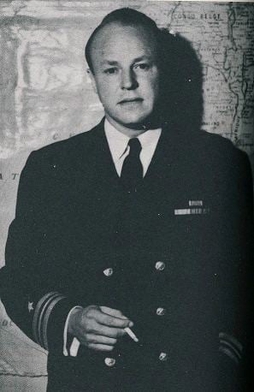
Frank Gardiner Wisner was one of the founding officers of the Central Intelligence Agency (CIA) and played a major role in CIA operations throughout the 1950s.

Aurel Vlaicu International Airport is located in Băneasa district, Bucharest, Romania, 8.5 km (5.3 mi) north of the city center. Named after Aurel Vlaicu, a Romanian engineer, inventor, aeroplane constructor, and early pilot, it was Bucharest's only airport until 1969, when the Otopeni Airport was opened to civilian use.

Operation Tidal Wave was an air attack by bombers of the United States Army Air Forces (USAAF) based in Libya on nine oil refineries around Ploiești, Romania on 1 August 1943, during World War II. It was a strategic bombing mission and part of the "oil campaign" to deny petroleum-based fuel to the Axis powers. The mission resulted in "no curtailment of overall product output".

Constantin Cantacuzino was a Romanian aviator, the leading World War II fighter ace of his country, as well as a member of the Cantacuzino family.

Alexandru "Alecu" Șerbănescu was a leading Romanian fighter pilot and flying ace in World War II. At the end of Romania's campaign on the side of the Axis, Șerbănescu was the country's leading ace, dying only 5 days before the country changed sides. He was credited with 47 aircraft confirmed destroyed and 8 probables.
The bombing of Romania in World War II comprised two series of events: until August 1944, Allied operations, and, following the overthrow of Ion Antonescu's dictatorship, operations by Nazi Germany.

Operation Flax was an Allied air operation during the Tunisian campaign, as part of the larger North African campaign of the Second World War. Flax was intended to prevent air supply between Italy and the Axis armies in Tunis, Tunisia, in April 1943. An equivalent Allied naval effort was called Operation Retribution.
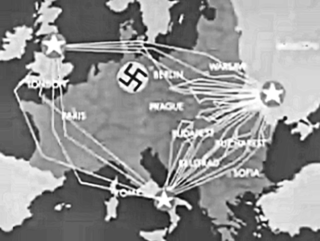
Operation Frantic was a series of seven shuttle bombing operations during World War II conducted by American aircraft based in Great Britain and southern Italy, which landed at three Soviet airfields in Ukraine. From there, the planes flew bombing missions en route back to their bases in Italy and Great Britain.

The 357th Fighter Group was an air combat unit of the United States Army Air Forces during the Second World War. The 357th operated P-51 Mustang aircraft as part of the U.S. Eighth Air Force and its members were known unofficially as the Yoxford Boys after the village of Yoxford near their base in the UK. Its victory totals in air-to-air combat are the most of any P-51 group in the Eighth Air Force and third among all groups fighting in Europe.
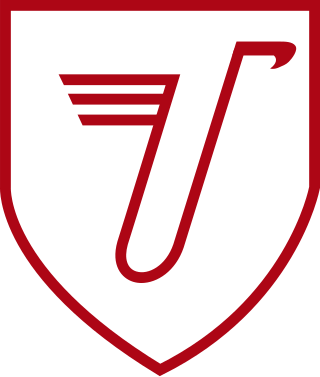
Jagdgeschwader 3 "Udet" was a Luftwaffe fighter wing of World War II. The Geschwader operated on all the German fronts in the European Theatre of World War II. It was named after Ernst Udet, an important figure in the development of the Luftwaffe, in 1942.

Luftflotte 4 was one of the primary divisions of the German Luftwaffe in World War II. It was formed on 18 March 1939, from Luftwaffenkommando Österreich in Vienna. The Luftflotte was redesignated on 21 April 1945, to Luftwaffenkommando 4, and became subordinated to Luftflotte 6. It was the Luftflotte 4, that was responsible for the bombing campaign of Stalingrad, where ca. 40,000 civilians died. This Luftwaffe detachment was based in Romania, Bulgaria, Southeast Poland, Hungary, Ukraine and Russian occupied territories, for supporting Axis forces; with command offices in Morczyn, Hungary, during 26 June 1944, Eastern Front.
Jagdgeschwader 301 was a Luftwaffe fighter-wing of World War II. The order to form JG 301 was issued on 26 September 1943 and formed on 1 October 1943 in Neubiberg with Stab and three Gruppen (groups) as a "Wilde Sau" single-seat night fighter unit.

The General Inspectorate of Aviation is Ministry of Internal Affairs's air component. The unit was initially established in 1948, but restructured in 1978. It has its overall headquarters at Aurel Vlaicu International Airport and operates five territorial flights in Bucharest, Caransebeș, Cluj-Napoca, Iași and Tulcea. The current General Inspector is Air Flotilla General Cătălin-Paul Dache.

During World War II, Operation Margarethe II was the name for a planned invasion of Romania by German forces in conjunction with those of Hungary and Bulgaria if the Romanian government decided to surrender to the Allies and switch sides. Although initially abandoned within a few weeks at the start of 1944, after King Michael's coup on 23 August 1944 and Antonescu's arrest, Hitler ordered the operation to commence. Led by Luftwaffe General Alfred Gerstenberg, then by General Reiner Stahel, the operation ultimately failed to occupy Bucharest and overthrow Michael and the new government.

The Western Allied Campaign in Romania consisted of war declarations and aerial operations during the Second World War by eight Western Allied countries against Romania which itself was primarily engaged on the Eastern Front in fighting against the Soviet Union.

The 53rd Fighter Squadron "Warhawks" is a squadron of the Romanian Air Force, first formed on 1 June 1940, then reactivated on 29 September 2016. The squadron currently operates the F-16AM/BM fighter aircraft.

Grupul 6 Vânătoare was a fighter group of the Royal Romanian Air Force (ARR) formed on 7 June 1940. The group participated in the World War 2 campaign of Romania on the Eastern Front and in the defense of the country against the Western Allied bombing raids. The group was disbanded in October 1944 as its pilots were transferred to Grupul 1 Vânătoare after converting to the Bf 109 from the IAR 81.





